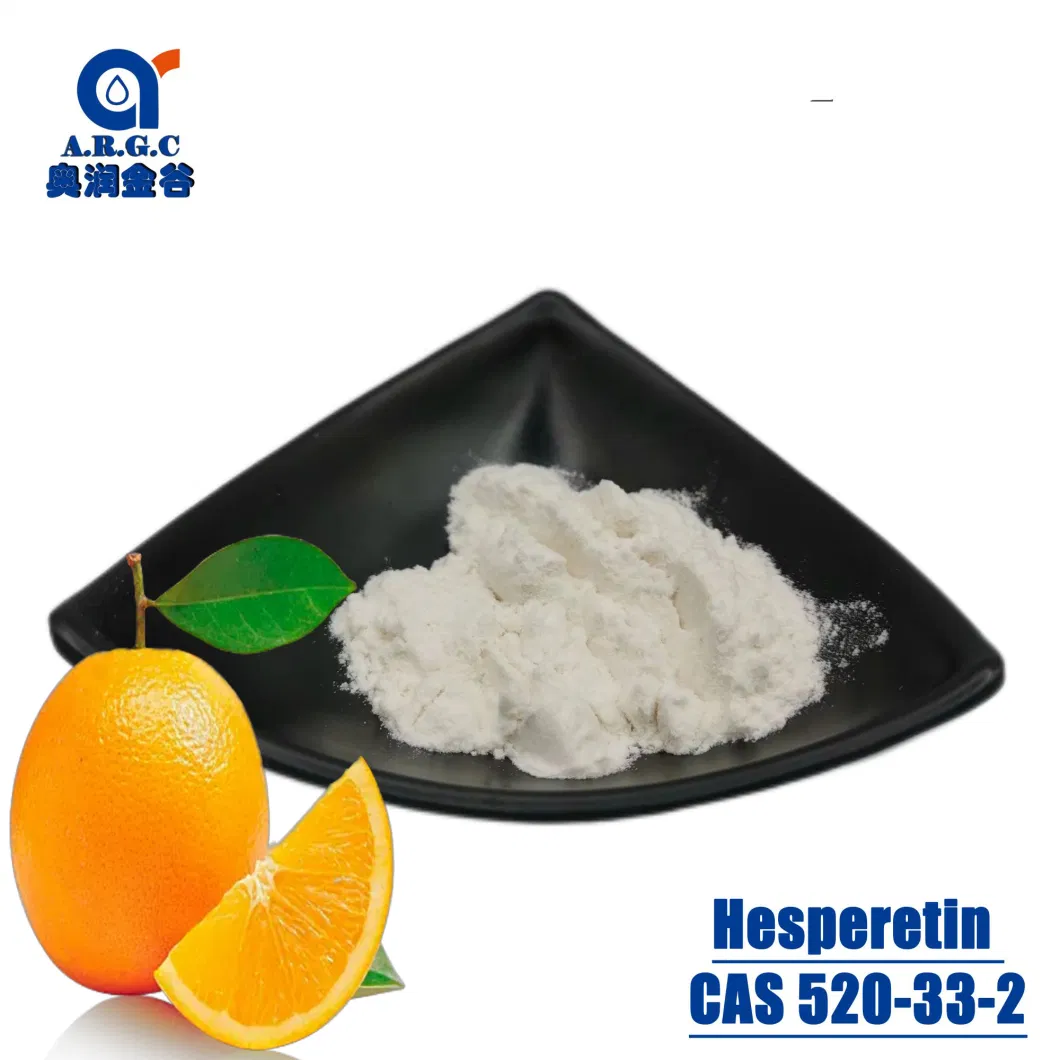Basic Info.
Model NO.
Synephrine
Nutrient Composition
Hesperetin 98%
Resource
Natural
The content of active substances
>90%
Ingredient1
Hesperetin
Ingredient 2
Synephrine
Plant Source
Citrus Aurantium Extract
Sample
Available
Delivery Time
Within 3 Days
Storage
Keep in Cool and Dry Place
Transport Package
1kg or 25kg/Drum, Drum, Aluminum Foil Bag
Specification
90% 95% 98%
Trademark
ALLRIGHT G. C.
Origin
Shandong
HS Code
2932999
Production Capacity
4ton/Tons Per Month
Product Description

 Hesperetin is a bioflavonoid and, to be more specific, a flavanone. Hesperidin (a flavonone glycoside) is water-soluble due to the presence of the sugar part in its structure, so on ingestion it releases its aglycone, i.e., hesperetin.Hesperidin is found in Citrus fruits.
Hesperetin is a bioflavonoid and, to be more specific, a flavanone. Hesperidin (a flavonone glycoside) is water-soluble due to the presence of the sugar part in its structure, so on ingestion it releases its aglycone, i.e., hesperetin.Hesperidin is found in Citrus fruits. Product: Hesperetin Citrus Aurantium Extract Powder
Specification : 90%∼98%
Appearance: White fine Powder
Molecular Weight : 302.29
Molecular Formul: C16H14O6
Solublity: 100% soluble in water
Loss on drying : <5%
Residue on ignition : <5%
Heavy metals: <10ppm
As : <1ppm
Lead: <1ppm
Total Plate Count : <1000cfu/g
Yeast & Mold: <100cfu/g
Salmonella : Not detected
E.Coli : Not detected

 Supplement use should be individualized and vetted by a healthcare professional, such as a registered dietitian, pharmacist, or healthcare provider. No supplement is intended to treat, cure, or prevent disease.
Supplement use should be individualized and vetted by a healthcare professional, such as a registered dietitian, pharmacist, or healthcare provider. No supplement is intended to treat, cure, or prevent disease. Hesperidin has been studied for the following conditions:
Cardiovascular disease (i.e., high blood pressure, stroke, and heart attack)
Blood vessel disorders (venous ulcers and hemorrhoids)
Metabolic disorders (type 2 diabetes and nonalcoholic fatty liver disease)
Neurodegenerative diseases
While supplements are not to be used as a cure or treatment, read on to see what the science says.

| Analysis | Specification | Results |
| Assay(HPLC) | ≥98% | 98.05% |
| Appearance | Light yellow powder | Complies |
| Bulk Density | 0.60g/ml | 0.71g/ml |
| Residual Solvent | ≤0.5% | Complies |
| Pesticides | Negative | Complies |
| Heavy metals | ≤10ppm | Complies |
| As | ≤5.0ppm | Complies |
| Loss on drying | ≤5% | 3.24% |
| Odor | Characteristic | Complies |
| Particle size | 100%through 80 mesh | Complies |
| Microbioiogical | ||
| Total of bacteria | ≤1000cfu/g | Complies |
| Fungi | ≤100cfu/g | Complies |
| Salmgosella | Negative | Complies |
| Coli | Negative | Complies |
| Storage Store in cool & dry place. Do not freeze. Keep away from strong light and heat. Shelf life 2 years when properly stored | ||
FREQUENTLY ASKED QUESTIONS
1.What is the difference between hesperidin and hesperetin?
Structurally, hesperidin is a flavanone glycoside composed of hesperetin (the aglycone form or nonsugar part of hesperidin) and the disaccharide rutinose (the sugar part). Hesperetin is generally considered active after removing the sugar part of hesperidin.
2.Another difference is that whereas hesperidin is absorbed in the large intestine, hesperetin is mainly absorbed in the small intestine.
What foods contain hesperidin?
Citrus fruits contain hesperidin, such as lemons, limes, mandarins, oranges, and grapefruits.However, the absorption and metabolism of hesperidin vary depending on the preparation of the citrus fruit. For example, the availability of hesperidin from orange juice has been shown to be greater than that of whole oranges.
Hesperidin can be obtained via food or supplements. However, the poor absorption of hesperidin has led to an interest in developing hesperidin supplement formulations with enhanced absorption.
Food Sources of Hesperidin
Citrus fruits that are a source of hesperidin include the following:
Lemons
Limes
Mandarins
Oranges
Grapefruits
Like other bioflavonoids, hesperidin works best when given with vitamin C.
Hesperidin from orange juice has greater availability compared to hesperidin from whole oranges. Moreover, hesperidin levels have been shown to be 3 times greater in commercially squeezed orange juice than in home-squeezed orange juice.
Citrus fruits, especially grapefruit juice, interact with certain medications. Please consult with your healthcare provider before adding them to your diet.
Additionally, reading the nutrition fact label is essential as some juices may contain high amounts of sugar.


